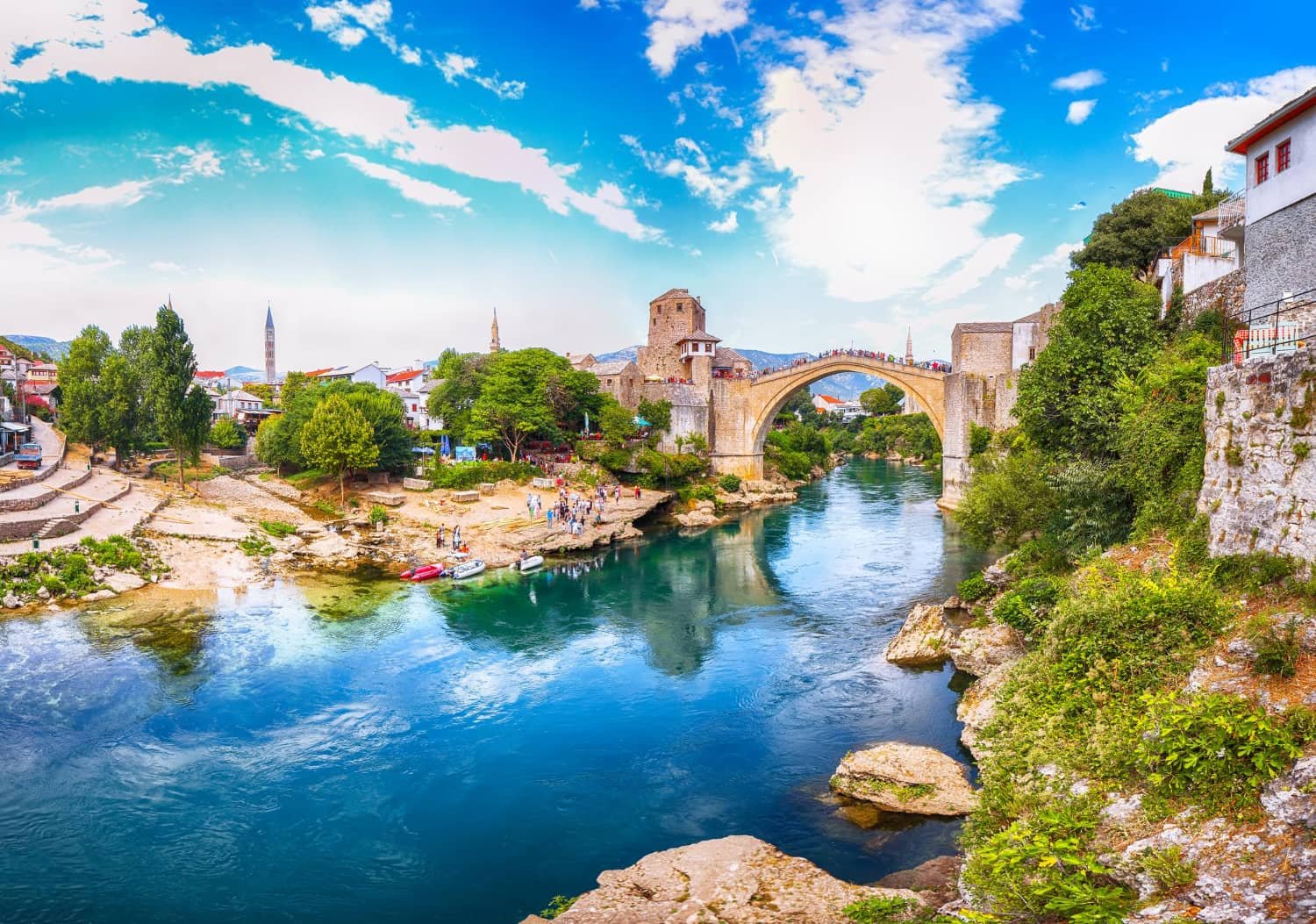These UNESCO World Heritage sites in Bosnia and Herzegovina showcase the country’s diverse and tumultuous past, from ancient Roman ruins to medieval fortresses and Ottoman architecture. The UNESCO World Heritage List recognizes the outstanding universal value of these sites, preserving them for future generations to appreciate.
Bosnia and Herzegovina, a hidden gem in the heart of the Balkans, is home to several remarkable UNESCO World Heritage Sites. This small country boasts a rich cultural and historical heritage recognized and protected by the United Nations Educational, Scientific and Cultural Organization (UNESCO). With its diverse landscapes, ancient architecture, and picturesque towns, Bosnia and Herzegovina offers visitors an opportunity to delve into its fascinating past.
Bosnia and Herzegovina is a hidden gem in the heart of Europe. Its rich cultural and historical heritage has earned it several UNESCO World Heritage sites.
UNESCO World Heritage Sites in Bosnia and Herzegovina
These sites are of immense cultural and historical significance and serve as a testament to this region’s rich heritage and diversity. From stunning medieval castles to breathtaking natural wonders, there is something for everyone to explore and admire.
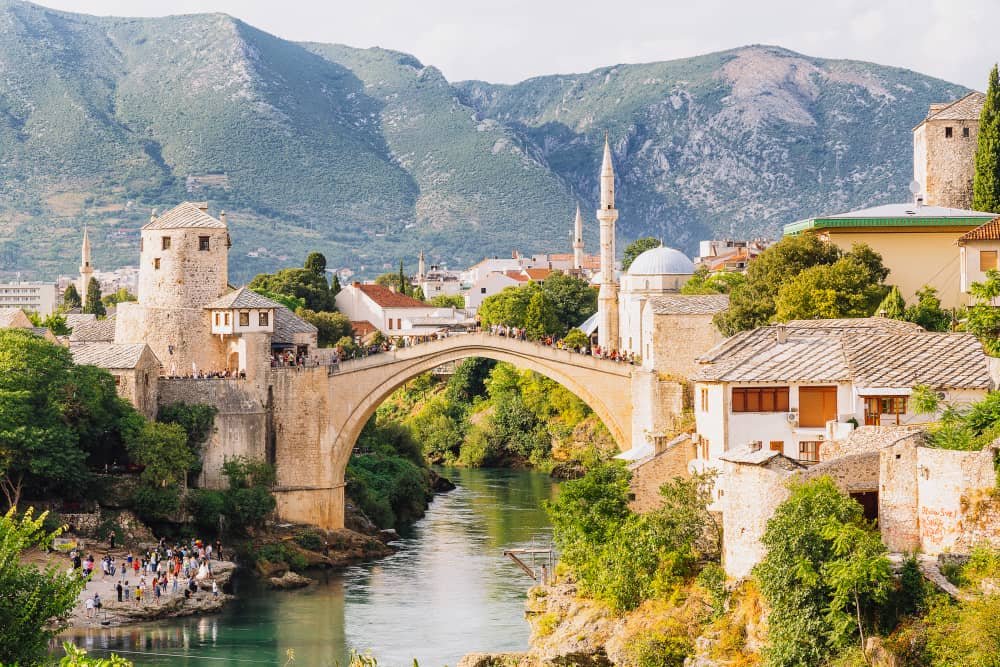
Old Bridge Area of the Old City of Mostar
One of the most renowned UNESCO World Heritage Sites in Bosnia and Herzegovina is the Old Bridge Area of the Old City of Mostar. Built in the 16th century during Ottoman rule, this iconic bridge symbolizes unity between different cultures and religions. The city is a melting pot of influences from various civilizations throughout history.
The Old Bridge is an architectural marvel that blends Eastern and Western influences. Its elegant arches reflect Islamic design, while its stone structure demonstrates European craftsmanship. Its significance lies in its stunning beauty and historical importance, as it once connected two distinct communities—the Christian Croats and Muslim Bosniaks.
This particular site was intentionally shelled and destroyed by the Croatian Defence Council in 1993. Following the war, the bridge underwent reconstruction using traditional construction techniques and materials sourced from the local area, ultimately reopening in 2004.
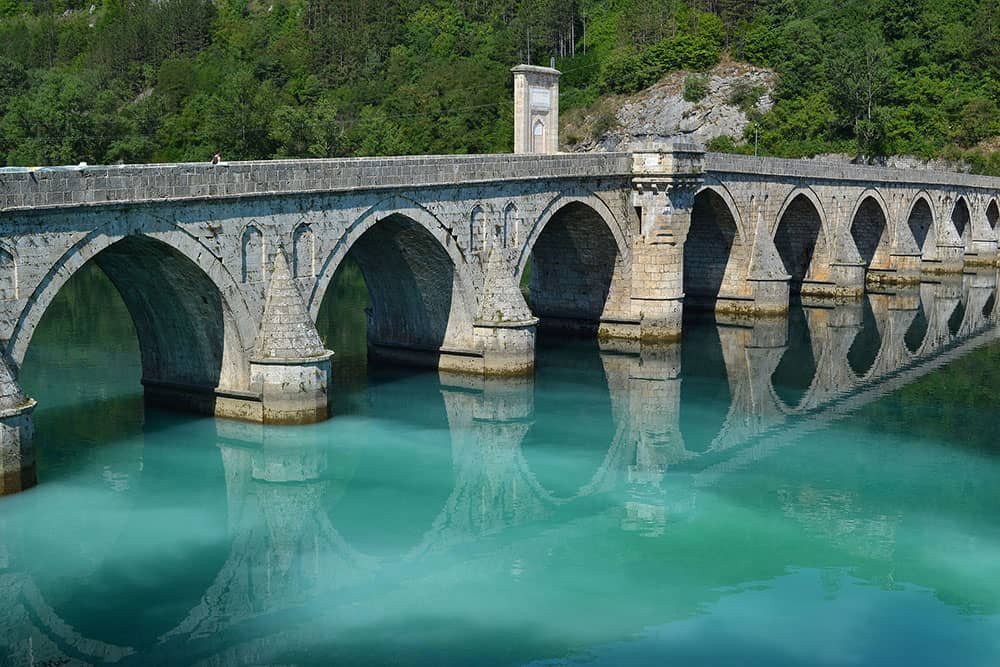
Mehmed Paša Sokolović Bridge
The Mehmed Paša Sokolović Bridge, located in Bosnia and Herzegovina, is a remarkable UNESCO World Heritage Site. In the 16th century, the renowned architect Mimar Sinan built this stunning masterpiece of Ottoman architecture. Spanning over the Drina River in Višegrad, this bridge has been a symbol of cultural heritage and engineering excellence for centuries.
The bridge’s design reflects a harmonious blend of Ottoman and Mediterranean architectural styles. Sturdy piers support its elegant stone arches, creating a graceful curve that complements the surrounding landscape. The intricate carvings adorning the bridge showcase traditional Islamic motifs and calligraphy, adding to its aesthetic appeal.
Beyond its architectural significance, the Mehmed Paša Sokolović Bridge also holds historical importance. This bridge is 179.5 meters (589 ft) long and features 11 arches. Notably, it has symbolic significance as a site where Christianity and Islam converge. Recognized as one of the UNESCO World Heritage sites in Bosnia and Herzegovina, it is a testament to its historical significance.
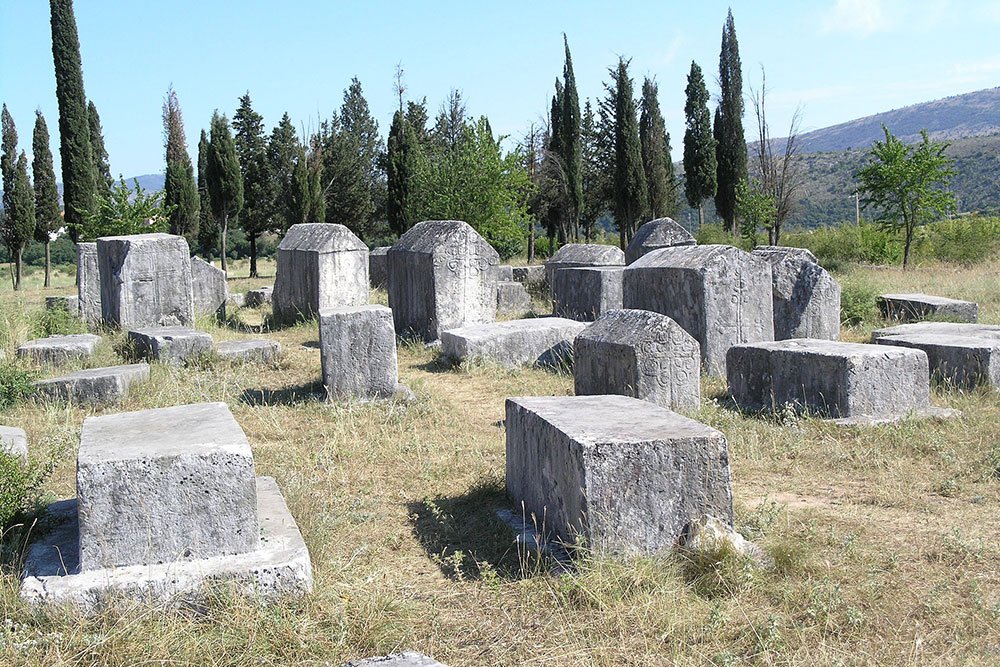
Stećci Medieval Tombstones Graveyards
Bosnia and Herzegovina, a country rich in history and cultural heritage, is home to one of the most fascinating UNESCO World Heritage Sites—the Stećci Medieval Tombstone Graveyards. These tombstones, known as stećci, are unique to this region and represent an essential part of Bosnia’s medieval past. These graveyards hold immense historical significance across various locations in the country and certain areas of Croatia, Serbia, and Montenegro.
The stećci tombstones are characterized by their distinctive shape and intricate carvings that depict scenes from everyday life, religious symbols, and ornate patterns. They testify to medieval Bosnian stonemasons’ artistic skills and craftsmanship.
These tombstones emerged during the 12th century and experienced their highest popularity during the 14th and 15th centuries. In Bosnia and Herzegovina, are 20 sites primarily situated in the country’s southeastern area. The largest concentration can be found in Radimlja, which is located within the Stolac municipality.
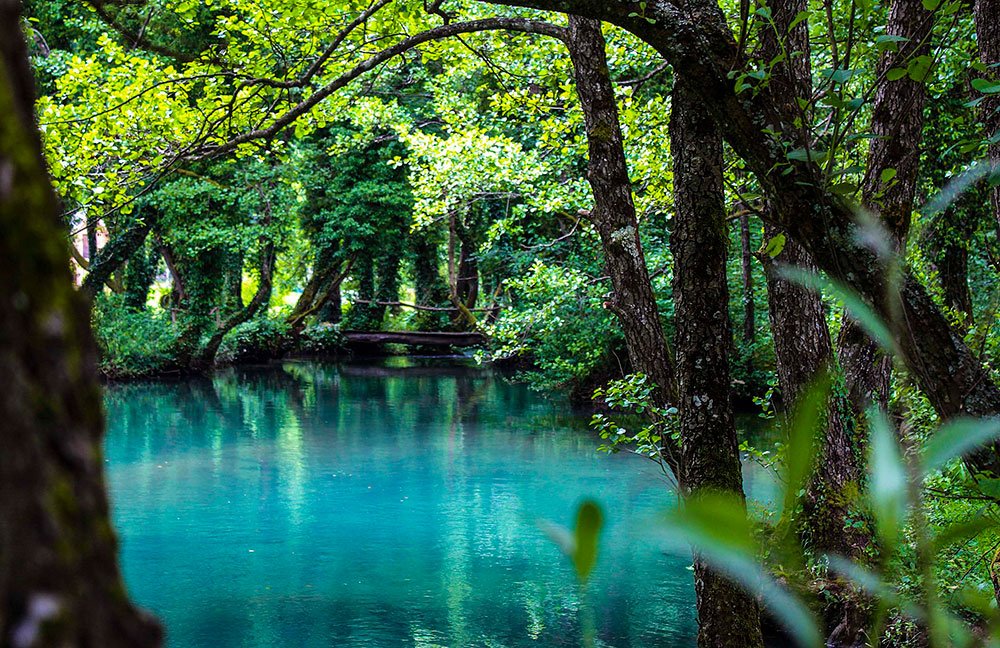
Ancient and Primeval Beech Forests of the Carpathians and Other Regions of Europe
The Ancient and Primeval Beech Forests of the Carpathians in Bosnia and Herzegovina are a treasure trove of natural beauty and biodiversity. Designated as one of the UNESCO World Heritage Sites in Bosnia and Herzegovina, these forests provide a glimpse into the region’s ancient past. Spanning over 20,000 hectares, this protected area is home to some of Europe’s last remaining primeval beech forests.
These forests have been untouched by human intervention for centuries, allowing them to develop their unique ecosystems. They are characterized by towering beech trees that can reach heights of up to 50 meters and are estimated to be over 400 years old. The dense canopy created by these ancient trees shelters numerous wildlife species, including bears, lynx, wolves, and rare bird species.
This significant listing in 2021 is a testament to this pristine forest’s ecological and cultural significance. Located in the heart of Bosnia and Herzegovina, the Janj forest covers an expansive area that boasts diverse flora and fauna, making it a haven for biodiversity.


